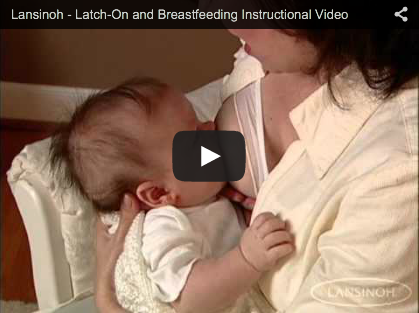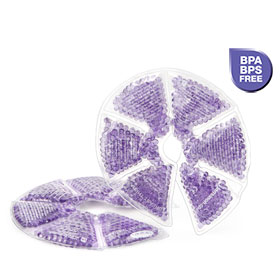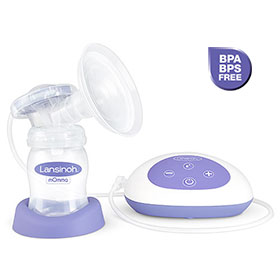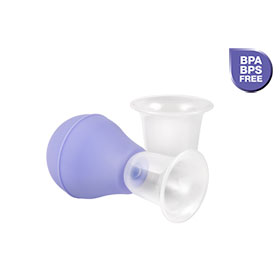Advice Articles
- Home
- Advice Articles
- Breastfeeding
- Breastfeeding Hurdles
Breastfeeding Hurdles

Plugged/Blocked Ducts
A plugged duct is an area of the breast where breastmilk is blocked.
Feed from the affected breast first of all each feed – this ensures that your baby empties the breast helping to resolve the blocked duct and increase milk supply which may have lessened on this breast.
You will usually notice a hard lump to touch, it may be wedge-shaped and feels tender, hot, swollen or looks reddened; there may be tenderness or pain without any lumps.
At the start of feeding from the affected breast you may feel more pain particularly with your let-down but after baby has finished feeding from that breast the pain and tenderness lessens and any lumps will feel smaller.
It is normal for your milk supply to slightly lessen. It will increase again and eventually the lumps, tenderness and redness will resolve.
Sometimes you may see ‘strings’ of thickened milk or fatty looking milk – this is normal and will resolve as the duct becomes dislodged.
As soon as you recognise that you have a blocked duct feed your baby frequently from the affected breast first. A delay in recognising and/or taking preventative measures could lead the milk to overflow into your breast tissue and this can lead to a breast infection called mastitis
A plugged duct can feel more tender before nursing and less so afterwards because the strength of baby nursing can dislodge some of the plugged duct. Mum can also feel tenderness between feedings as milk builds up. While it is not always the case, mum can sometimes get a low fever (less than 101.3°F/38.5°C).
Some causes of plugged ducts can include:
• Engorgement. Watching the clock and not your baby can cause delays in your feedings and can cause plugged ducts as the milk has nowhere to flow once it has built up.
• Infrequent or skipped feedings. It is important to feed “on demand” so you are watching your baby’s hunger cues and your body gets regular signals to keep replenishing your milk supply. If, for instance, mum and baby are apart during a feeding, it is very important for mum to pump in order to release the milk that is built up and so her body can continue to receive the signals needed to make more milk.
• Restrictive clothing (especially underwired bras). Any pressure that causes a kink in the channel where milk flows can cause a blockage and can result in plugged duct. It is important to avoid underwired bras and any tight clothing that will put pressure on your breasts, especially on the underside of the breast, where an underwire or tight strap would be.
If you think you have a plugged duct:
• Continue nursing, and get proper rest and nutrition
• Nurse frequently to drain the breast
• Use heat and gentle massage on the affected area before and during nursing to encourage milk flow. Use warmed compresses or warmed THERA°PEARL® 3-in-1 Breast Therapy packs before feeding sessions to encourage milk to flow and loosen the plugged duct
• Avoid wearing tight clothing and underwired bras
• Nurse first on the plugged duct side as baby’s strong sucking at the beginning of breastfeeding can help dislodge the blocked area
• After nursing, pump or hand express any leftover milk to ensure the breast has been emptied
• Use cold compresses or cooled THERA°PEARL® 3-in-1 Breast Therapy packs in between feeding sessions to soothe and reduce inflammation
Mastitis – A Breast Infection
Plugged ducts and mastitis often go hand in hand, but you can get one without the other. It is possible to get a breast infection from sore, cracked, or bleeding nipples as they can create a breeding ground for bacteria. A surface infection on the nipple and previous bouts with mastitis are also risk factors.
Some mums may find their milk seems more fatty or stringy, much like when a duct is plugged. Swelling can be more intense than with a plugged duct with red streaks seen around the affected area. Breastmilk could also taste saltier to baby and baby could temporarily refuse to nurse on that side but there is no reason not to nurse if baby wants to. The milk from a breast with mastitis could also have blood or mucus in it but it is still ok to nurse if this happens. It is important to offer baby that breast and not to stop nursing if you have mastitis. If baby is refusing, it is very important to pump when baby would be nursing to ensure that your milk is being drained regularly and so baby can have expressed breastmilk during those feedings.
Mastitis symptoms can come on very suddenly and you may feel like you have the flu – lethargic, tired, and achy. If the issue is not resolved in the first 12-24 hours, you may need to go on antibiotics. It is important to consult with a breastfeeding advisor or your healthcare provider to ensure that breastfeeding is not interrupted unnecessarily and that the medication prescribed is compatible with breastfeeding.
If you think you have mastitis:
• Continue nursing and get proper rest, hydration, and nutrition
• Nurse frequently to drain the breast. If baby won’t nurse from one side, continue to pump to maintain your milk supply
• Use heat and gentle massage on the affected area before and during nursing to encourage milk flow
• Loosen tight clothing or bras
For blocked ducts, engorgement, and mastitis you need plenty of rest, drink lots of fluids and to eat. You will also need to continue feeding your baby on demand and encourage your baby to feed frequently, aiming for 2 hours between feeds. If you feel too ill to nurse, it is important to pump so your body continues to get the stimulation it needs to keep up your supply.
For all of these conditions ensure your baby feeds from the affected breast first at every feed, but make sure your other breast does not become over full.
If this happens, you may need to do some hand massage to gently evert the nipple or use a tool called Lansinoh® LatchAssist® Nipple Everter which can be helpful as it uses gentle suction to temporarily evert a nipple flattened due to swelling. As an alternative, you can pump to help release some of the milk around the nipple to soften the breast just enough for baby to latch on – check baby’s attachment to make sure that s/he will take a full feed helping to resolve the problem.
Related Categories
Related Articles
-

Breastfeeding – The Early Days
Just keep persevering and trust that you are giving your baby the best possible...
Read More -

Engorgement, Blocked Ducts and Mastitis
On the whole, engorgement is a great reassurance for mothers and lovely feedback to...
Read More -

Latching On Video
Discover the best breastfeeding positions as well as the latching on technique which results in successful...
Read More -

Mastitis
Symptoms of Mastitis: develop a sore, hard lump in your breast feel unusual warmth...
Read More
Related products
-

Thera°Pearl® 3-in-1 Breast Therapy
Flexible and reusable, Thera°Pearl’s 3-in-1 Breast Therapy packs have soft covers that can be slipped... View -

Single Electric Breast Pump
Lansinoh’s Single Electric Breast Pump has been designed to help you express your precious breast milk... View -
... View -

LatchAssist™ Nipple Everter
When a baby cannot achieve a good latch, trying to breastfeed can be frustrating and upsetting for both... View
